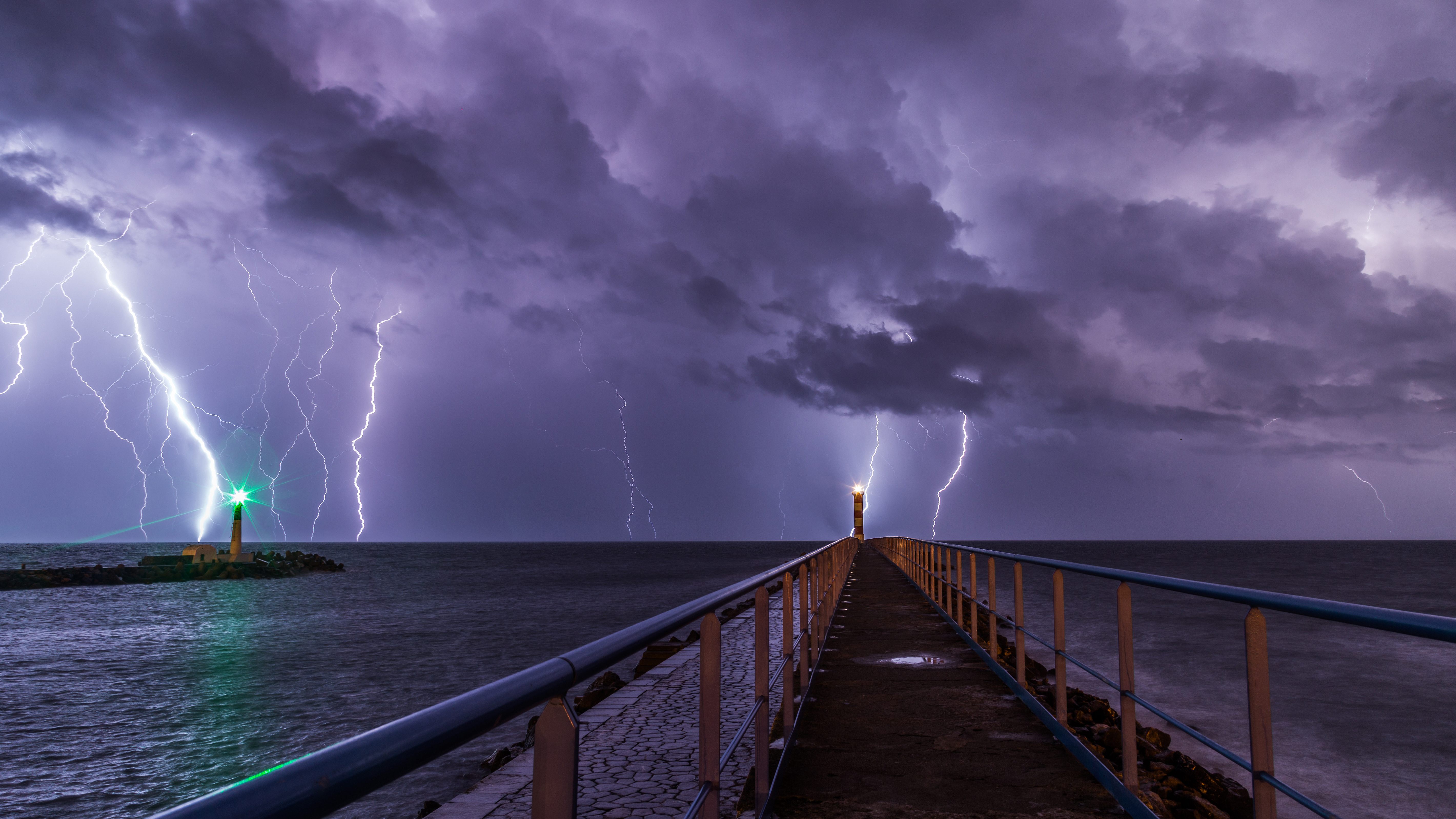Cargo Ships Are Creating Sea Lightning
Oceanic shipping lanes see double the number of strikes.

A massive ship that cruises the vast oceans creating intense lightning storms might sound like something out of a particularly cool Dungeons & Dragons campaign, but recent research into the effects of cargo ship exhaust on sea lightning shows that it’s not a fantastical idea at all. It is, however, particularly uncool for the environment.
According to a story in Science, a study published in Geophysical Research Letters has shown that major oceanic shipping lanes can experience twice the amount of lightning strikes compared with surrounding waters. Researchers saw the increase in 12 years of lightning data from the World Wide Lightning Location Network covering two of the world’s most trafficked shipping lanes—Sri Lanka to Sumatra and Singapore to Vietnam.
The increase in lightning storms over the lanes is, unsurprisingly, thought to be linked to the huge cargo ships that ply them. According to the study, as the ships belch out nearly unfathomable (and likely deadly) amounts of toxic emissions during their long treks, and the pollutants rise, “lead[ing] to a microphysical enhancement of convection and storm electrification in the region of the shipping lanes.” In lay terms, the exhaust leads to smaller cloud particles, which leads to more ice in the clouds, which leads to more lightning.
The environmental impact of the increased lightning density is unclear. But it is a loud and clear example of how humanity is altering weather patterns. It’s also pretty metal, but maybe we shouldn’t plan to ride this lightning.









Follow us on Twitter to get the latest on the world's hidden wonders.
Like us on Facebook to get the latest on the world's hidden wonders.
Follow us on Twitter Like us on Facebook